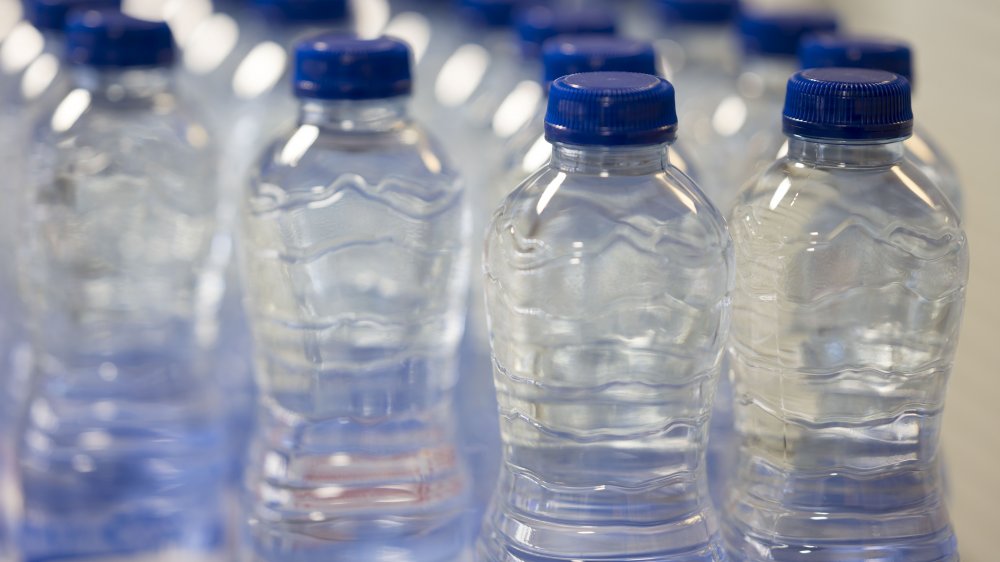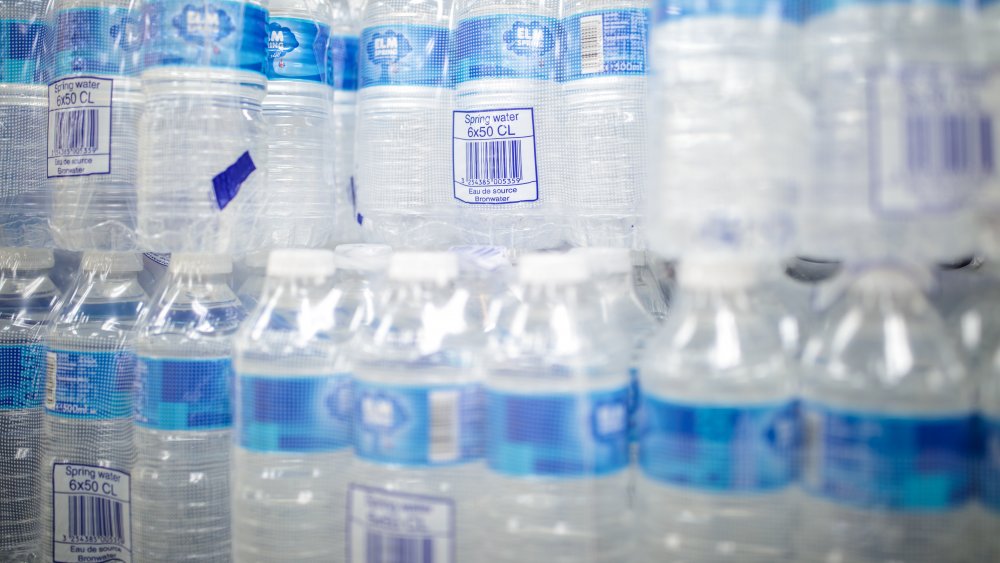You Should Never Drink Bottled Water That's Been Sitting In The Sun. Here's Why
When plastic bottles were introduced in the 1970s, they served as a cheaper alternative to glass bottles (via National Geographic). Given the fact that a plastic water bottle takes 450 years to completely decompose, and there's a massive garbage patch made predominantly out of plastic debris in the middle of the Pacific Ocean (via National Geographic) there is an awareness developing that humanity needs to shift away from buying and using plastic water bottles.
Even so, they can serve an important purpose. In areas where tap water is undrinkable, for example, plastic bottles of purified water are the only source of drinkable water. They can also be good to have on hand on an outing or in your house in case of an emergency. But if you have a stash of bottled water somewhere, one of the most important things to do is keep it out of the sun.
What high temperatures do to plastic bottles
A study done by the University of Florida found that if a plastic water bottle is exposed to long periods of heat, it can release bisphenol A (commonly abbreviated as BPA) and the chemical element antimony into the water (via Vice). Researchers have suggested that BPA has been found to change hormone levels, lead to cardiovascular issues, and even increase the risk of some cancers. Introducing antimony into your system can lead to a range of gastrointestinal issues including diarrhea, vomiting, and stomach ulcers.
The study measured the levels in bottles that were kept at a temperature of up to 158 degrees Fahrenheit and found that the higher the temperature, the higher the levels of BPA and antimony in the water. This means doesn't have to directly be in the sunlight, but instead it's the associated temperature that causes the plastic to leach impurities into the water.
If you stick to the shelf life suggested for bottled water (typically a year) and don't store it in unnecessarily hot environments, everything should be be fine.

